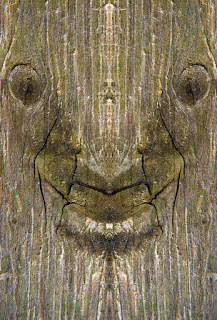The Creature that informed the Prophet on Jinn listening to Quran
Praise be to Allah, narrated by Abdur Rahman: "I asked Masruq who informed the Prophet about the jinns at the night when they heard the Quran?' He said. 'Your father Abdullah informed me that a tree informed the Prophet about them. (Authentic hadith [Sahih Bukhari] Volume 5 - Book 58 - Number 199)
Another ahadiths which proves that trees can talk and have emotions; Jabir (ra) said: There was a trunk of a date-palm tree upon which the Prophet (pbuh) used to recline while delivering Khutbah (sermon) on Friday. When a pulpit was placed in the mosque, we heard the trunk crying out like a pregnant she-camel. the Prophet (pbuh) came down from the pulpit and put his hand on the trunk and it became quiet. Then he (pbuh) said, "It was crying for (missing) what it used to hear of religious" knowledge given near to it." (Sahih al-Bukhari #3584 or Book 61, Hadith 93)
Prophet (pbuh) said: "The Jews will fight you and you will prevail over them, then a rock or a tree will say: 'O Muslim, here is a Jew behind me; kill him, except the gharqad (a thorny tree), for it is one of the trees of the Jews." (Saheeh Muslim 2922) During the Final Battle between the Muslims and the Jews (prophesized to happen just before the Day of Judgment) trees will talk to Muslims to tell them if a Jew is hiding behind it so that they can kill them. Except for one kind of tree, which for some reason loves Jews and won't rat them out. According to some of my old Islamic studies teachers, all Jews grow that tree in their back yards lol.
"See you not that whoever is in the heavens and whoever is on the earth, and the sun, and the moon, and the stars, and the mountains, and the trees, and Ad-Dawaabb [moving (living) creatures, beasts], and many of mankind prostrate themselves to Allah. But there are many (men) on whom the punishment is justified. And whomsoever Allah disgraces, none can honour him. Verily, Allah does what He wills" (Quran 22:18)
What this means is that every created Dawaabb [moving (living) creatures, beasts], and many of mankind prostrate themselves to Allah. But there are many (men) on whom the punishment is justified. And whomsoever Allah disgraces, none can honour him. Verily, Allah does what He wills" (Qur'an 22:18)
What this means is that every created being is in a state of submission to Allah and worships Him in a manner appropriate to its situation. The sun, moon, stars, trees and animals are all in a state of subjugation to Allah and prostrate to Him, and all of them worship Him in an appropriate manner. And Allah knows best.
The Real Faces of Trees
Italian photographer Elido Turco spent four years between 2004 and 2008 exploring a mirrored photography world that remains invisible to most of us.
By taking photographs of tree bark (prev vid tree trunk cried) and then mirroring the photographs he captured, he discovered a whole society of "Dream Creatures" were watching him each time he would take a stroll through the mountain paths.
Turco loves walking the mountain paths of his native Friuli with his wife, and for years he would use this time to try and find human forms and faces formed by the bark and roots of the trees in the forest. Bioloaists, ecoloaists, foresters and naturalists increasingly argue that trees speak, and that humans can learn to hear this language.
Many people struggle with this concept because they can't perceive that trees are interconnected, argues biologist George David Haskell in his 2017 book The Songs of Trees. Connection in a network, Haskell says, necessitates communication and breeds languages; understanding that nature is a network is the first step in hearing trees talk.
For the average global citizen, living far from the forest, that probably seems abstract to the point of absurdity. Haskell points readers to the Amazon rainforest in Ecuador for practical guidance. To the Waorani people living there, nature's networked character and the idea of communication among all living things seems obvious. In fact, the relationships between trees and other lifeforms are reflected in Waorani language.
Trees "They can feel pain, [and] have emotions, such as fear. Trees like to stand close together and cuddle. They love company and like to take things slow," these are just a couple of findings by Peter Wohlleben, a German researcher who devoted his work to studying trees.
"There is in fact friendship among trees," says Wohlleben. "They can form bonds like an old couple, where one looks after the other. Trees have feelings."
















Comments
Post a Comment